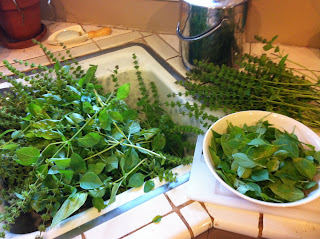 |
| Northern Borders™ Variegated Cotoneaster |
A non-gardening friend of mine was amused to note that one
of the accomplishments I list on my LinkedIn page is Botanical Latin. My
fluency with Latin binomials is useful when talking with others in this great
business and helps me to be more precise.
Over the years I have come across three bug-a-boo plant
names that give students pause, and must be heard to be believed. These are Cotoneaster, Leucothoe and Weigela.
Centuries ago, before I enrolled in grad school for
Horticulture and was systematically reading every single gardening book in the
Carnegie Public Library*, I stumbled across Cotoneaster which I first saw
written and not pronounced. Like anyone else, I supposed it might be called
“cotton Easter” but this is not the case. It’s actually more like “Co-TONY-aster”.
A lovely example of this plant is the Northern Borders™ VariegatedCotoneaster by Garden Debut®.
 |
| Whitewater(R) Leucothoe PP18396 |
The next bug-a-boo that people often come across is
Leucothoe. This is actually pronounced more like “Lou-KO-tho-wee”. A variegated
favorite of mine is Whitewater® Leucothoe PP18396 that does so well in moist shade..
Third, students in my Woody I.D. class at Gwinnett Tech were
calling a plant “Wiggly-Ah” which I found most endearing. Actually it is called
“Why-GEE-La”. A nice small dwarf form good for most gardens is Minuet Weigela.
 |
| Minuet Weigela |
Luckily, Fine
Gardening Magazine has come to the rescue of all concerned gardeners with
their online Pronunciation Guide to Botanical Latin. After clicking on a plant name, the audio will pronounce it clearly and distinctly, and is a great help .
What plant names are your personal bug-a-boos?
*That’s another story.




















